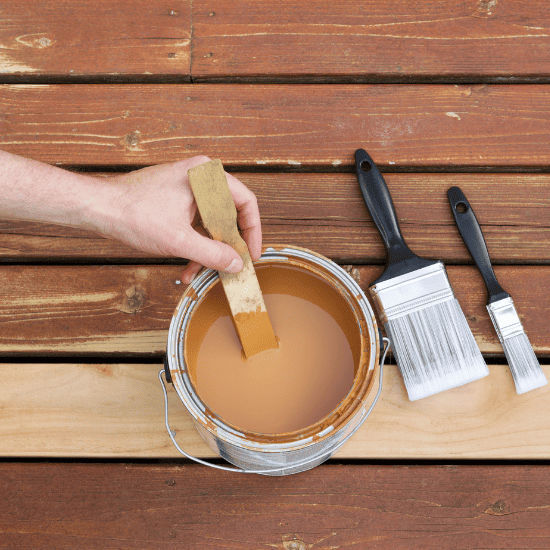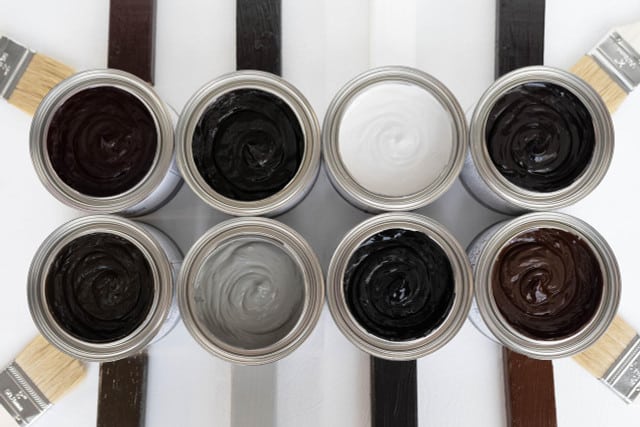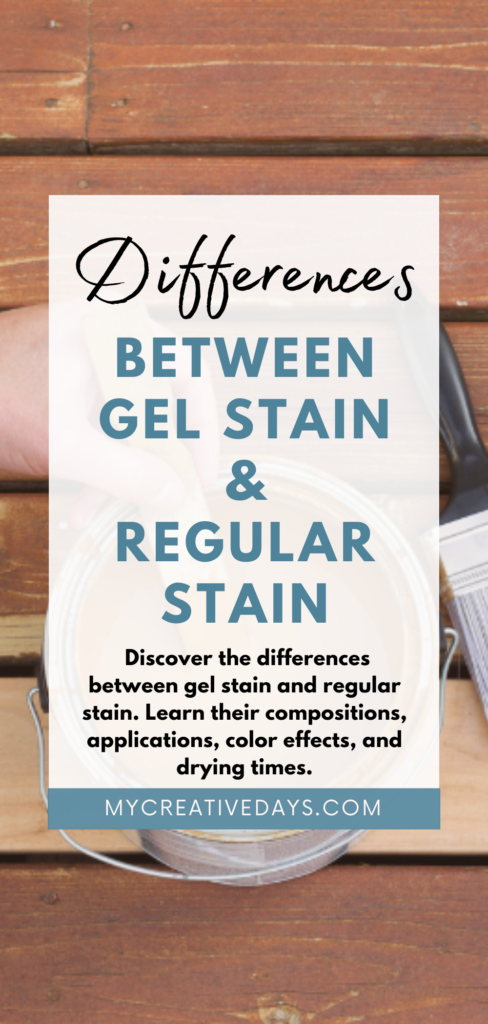Discover the differences between gel stain and regular stain. Learn their compositions, applications, color effects, and drying times.
When it comes to enhancing the beauty of wood, stains play a crucial role. They add color, depth, and protection to wooden surfaces, making them an integral part of woodworking and furniture refinishing projects. Two common types of stains are gel stains and regular stains. While they both serve the same purpose, they have distinct characteristics and applications. In this blog post, we’ll delve into the differences between gel stain and regular stain, helping you make informed decisions for your woodworking endeavors.

Understanding the Differences Between Gel Stain and Regular Stain
1. Composition and Consistency
Gel Stain: Gel stain is a thicker, more viscous stain that contains a higher ratio of pigments to solvents. This results in a more concentrated color that sits on the surface of the wood rather than penetrating it deeply. Gel stains have a consistency similar to pudding, allowing for better control during application.
Regular Stain: Regular stain, also known as liquid stain or penetrating stain, has a thinner consistency. It contains a balanced ratio of pigments and solvents, which allows the stain to penetrate the wood fibers and create a more natural, transparent look.
2. Application Techniques
Gel Stain: Due to its thicker consistency, gel stain is well-suited for vertical surfaces and intricate woodwork. It is often used on woods with uneven textures, such as oak, pine, or cherry. Gel stains can be applied using a brush, rag, or even a foam applicator. Since it stays on the surface, it is easier to control and manipulate, making it ideal for achieving consistent color on irregular surfaces.
Regular Stain: Regular stain is suitable for horizontal surfaces like tabletops, floors, and larger areas of wood. It is applied with a brush, rag, or spray, and is then wiped off after a few minutes to achieve the desired color intensity. The longer the stain is left before wiping, the deeper the color penetration. Regular stains work best on woods with even textures, like maple, birch, and mahogany.
3. Color Depth and Coverage
Gel Stain: Gel stains are known for their rich and vibrant colors. Since they sit on the surface, they provide a more opaque and consistent color that can mask imperfections in the wood. This makes them a popular choice for achieving darker and more intense finishes.
Regular Stain: Regular stains offer a more natural and translucent appearance, allowing the wood’s natural grain and texture to show through. They are great for achieving subtle color variations and highlighting the beauty of the wood itself.

{Affiliate links are used in this post. Click on any of the underlined links to find the products I am talking about. You can read my disclosure HERE.}
4. Drying Time and Recoating
Gel Stain: Gel stains have a longer drying time compared to regular stains due to their thicker consistency. This can be advantageous for intricate projects, as it provides more time to work with the stain before it dries. However, this also means that multiple coats may take longer to apply.
Regular Stain: Regular stains dry relatively quickly due to their thinner consistency, which can be both an advantage and a challenge. While the quicker drying time allows for faster recoating, it can also make it challenging to achieve consistent results, particularly on larger surfaces.
In the world of woodworking and furniture refinishing, choosing the right stain is essential to achieving your desired results. Gel stain and regular stain each have their own unique characteristics, making them better suited for specific applications. Gel stains offer vibrant colors and easy application on uneven surfaces, while regular stains provide natural beauty and quicker drying times. By understanding these differences, you can confidently select the right type of stain for your next woodworking project, ensuring a stunning and enduring finish that showcases the inherent beauty of wood.
I use both stains for different projects. I didn’t use gel stain for the longest time. But, when I did try it, I haven’t looked back. I use it a lot on my furniture projects. You can find my favorite gel stain HERE.
If you have a hard time choosing colors, I have a full video showing all the colors of this gel stain being applied to wood right next to each other so you get a good look at each color. You can find that video HERE. Make sure to SUBSCRIBE when you are there! I am sharing new videos every week!
PIN THIS POST!

If you found this post helpful, you will also love these posts:
Scuff Sanding vs. Regular Sanding
Dixie Belle Paint Silk 3-in-1 Paint
How To Make Furniture Flips Go Faster

